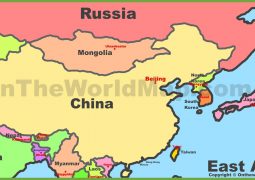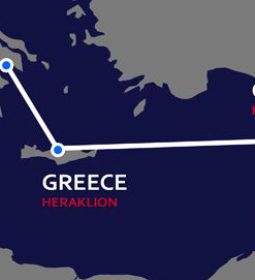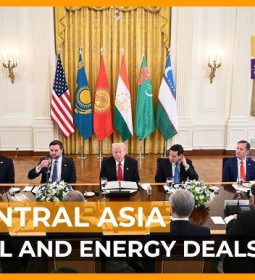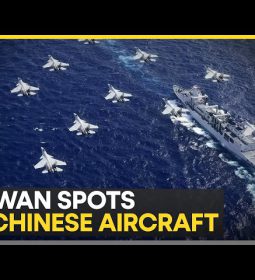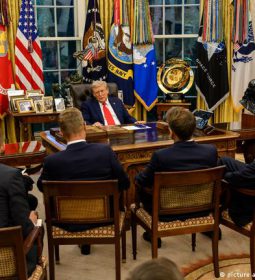South China Sea naval arms race is on: Manila’s options

Malaysia, Indonesia and Vietnam have boosted their naval and coastguard assets as tensions in the disputed waters continue to simmer
An injection of US$8 million by the US into the Philippine coastguard has shone the spotlight on Manila’s maritime strategy amid its ongoing territorial row with Beijing in the South China Sea while also bringing attention to similar fleets of claimant states in the region.
Observers say that coastguard fleet sizes and capabilities in the disputed waterway vary according to each nation’s history and strategic interests, with states such as Indonesia and Malaysia relying more on their navies to deter any foreign incursions.
One analyst argues that many regional countries do not possess adequate fleet sizes for their coastguards.
Do you have questions about the biggest topics and trends from around the world? Get the answers with SCMP Knowledge, our new platform of curated content with explainers, FAQs, analyses and infographics brought to you by our award-winning team.
The Philippines, according to other experts, should hedge its bets on a hybrid strategy of “quiet diplomacy” and “active measures”, such as leveraging on US funding to improve its coastguard capabilities, even if the amount is not expected to yield any long-term boost to its defensive posture against increased Chinese aggression.
On Monday, the US embassy in the Philippines said in a statement that the US$8 million funding would support the Philippine coastguard’s (PCG) “infrastructure enhancements, training programme development and resource acquisition and management planning”.
Chris Gardiner, CEO of the Institute for Regional Security in Canberra, told This Week in Asia that the move was a modest contribution that complemented significant support already provided by Japan to the PCG.
The PCG currently operates 62 patrol vessels, four support ships and 469 auxiliary boats. Tokyo previously delivered maritime equipment to Manila – two 97m patrol vessels and 10 multi-role response vessels – under the Japan International Cooperation Agency Official Development Assistance loan.
“Strengthening the coastguard matters. The People’s Republic of China wages its campaign of territorial expansion in part through the use of [domestic] lawfare and grey-zone ambiguity,” Gardiner said.
“Its extensive use of coastguard vessels in contesting maritime boundaries is meant to signal that it’s simply deploying non-military assets and personnel who are going about enforcing domestic laws in PRC territorial waters.”
Gardiner also warned that the Philippines should be wary of using naval assets to counter China in the disputed waters.
“The use of naval assets in response opens the responding state to the charge that it has militarised a conflict and used military forces to attack non-military Chinese assets and personnel,” he said.
The Ferdinand Marcos Jnr administration, according to Gardiner, is not alone in underinvesting in coastguard forces. More funding for Manila was needed to address Chinese actions, such as militia-backed fishing fleets, as well as other issues like organised crime, human-smuggling, and illegal resource extraction and shipping, he said.
Beijing has been accused of employing aggressive tactics against Philippine ships in the South China Sea, such as firing water cannons and using high-intensity lasers, in a bid to assert its territorial claims in the disputed waters.
The US$8 million funding is the second round of US financial help this year for Manila to boost its defence capabilities.
China claims nearly the entire South China Sea, including areas also claimed by the Philippines, Brunei, Malaysia and Vietnam. An international tribunal dismissed China’s territorial assertions in 2016, declaring them without legal basis – a verdict that Beijing has consistently rejected.
Compared with other claimant states in the South China Sea, China has the largest coastguard fleet, with around 500 surface vessels. These include more than 155 large ships equipped with substantial armaments, including naval-grade guns.
One of the Chinese coastguard’s assets, the 165-metre vessel nicknamed “The Monster”, was deployed previously off the Scarborough Shoal, a highly contested maritime feature in the South China Sea that Manila claims is within its exclusive economic zone.
Measuring up
Chester Cabalza, president of the Manila-based International Development and Security Cooperation think tank, said each claimant state tailored its coastguard fleet strategy and material requirements to suit specific strategic interests.
Indonesia started its defence reforms and military modernisation early, he noted. It has seven 60-metre large Class 1 patrol boats, 15 40-meter Class 2 patrol boats, and 300 smaller vessels patrol boats across various classes.
While Indonesia is not one of the South China Sea claimant states, an area in the disputed waters overlaps with its exclusive economic zone off the Natuna coast.
“Indonesia bought advanced defence weapons for the coastguard and manufactured warships and warplanes. It has advanced its legal and sovereignty rights using the Unclos,” he said, referring to the United Nations Convention on the Law of the Sea.
Vietnam’s drive to modernise its coastguard and navy was a reflection of its past battles against foreign invaders, Cabalza said. Hanoi, which has a history of maritime confrontations with China, appeared to be bolstering its assets in the disputed Paracel and Spratly Islands, he added.
The Vietnamese coastguard (VCG) operates 64 vessels larger than 100 tons, including multirole patrol vessels and larger cutters. It has acquired locally-built 2,200 tons DN-2000-class vessels along with four DN-4000-class vessels.
Malaysia’s fleet, meanwhile, has six Bagan Datuk-class patrol vessels and three Tun Fatimah-class offshore patrol vessels, with the first from the latter group delivered early this year.
Cabalza said Malaysia has adopted “quiet diplomacy” with China even as it boosted its coastguard capabilities. “They possess strong coastguard ships but exercise restraint while de-risking their strategic goals,” he added.
However, Abdul Rahman Yaacob, a research fellow with the Lowy Institute’s Southeast Asia programme, said the Malaysian and Indonesian coastguards still lacked sufficient vessels to police and protect their maritime interests, especially in deeper waters.
“These two countries still primarily rely on their navies,” Yaacob told This Week in Asia.
“The recent Indonesian engagements with the Chinese coastguard demonstrated Indonesia’s reliance on the navy for protecting its maritime interests. An Indonesian warship assisted the Indonesian coastguard to shadow and chase a Chinese coastguard vessel out of the waters around the Natuna Islands,” he added.
Yaacob said that with the PCG stepping up its patrolling and inspection in the South China Sea, it should also be mindful of the jurisdiction of regional agencies.
“If there are overlapping jurisdiction, it may pose a problem for shipping, especially commercial ones, travelling within the Philippines’ waters as they may face inspections from different government agencies,” he cited.
Cabalza said that Manila should adopt a broader approach to counter Beijing’s activities in the waterways.
“The Philippines has maximised its transparency strategy in exposing the China coastguard’s grey-zone and unlawful activities in the West Philippine Sea. It must now adopt a hybrid approach – combining quiet diplomacy with active measures – to further its strategic objectives,” he added.
More Articles from SCMP
- Previous Arab “Solidarity” in Full Display: German ship carrying explosives to Israel docks in Egypt
- Next Chicken-Hawks game now in North-East Asia: South Korean Officials Block Bid to Send Balloons Carrying Leaflets Into North








